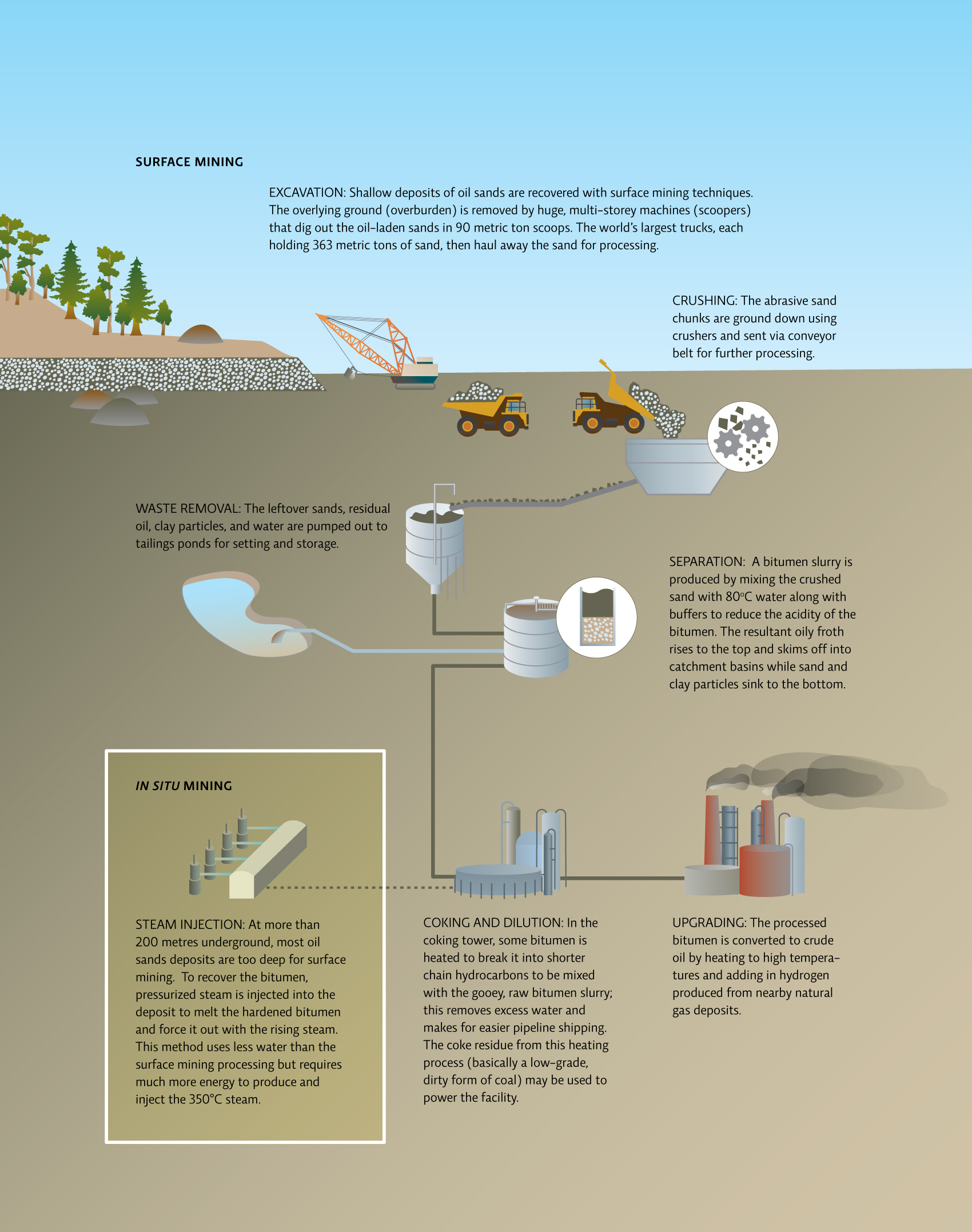20.4 We are increasingly relying on unconventional sources of oil.
Since conventional oil supplies won’t last forever, geologists have begun to focus their energy on the unconventional oil reserves.
The United States possesses the world’s largest concentration of oil shale, compressed sedimentary rocks that contain kerogen, an organic compound that is released as an oil-like liquid when the rock is heated, a process that is difficult and energy intensive and not yet commercially pursued. Primarily on federal lands, oil shale contains an estimated 1.23 trillion barrels of oil, more than 50 times the country’s proven oil reserves, according to the U.S. Bureau of Land Management.
Canada’s oil is predominately found in its vast oil sands formations. Some of this oil can be mined on the surface. Flying over the Athabasca watershed, Schindler witnessed bitumen-rich soil being extracted from the surface, then dragged across the landscape by monster trucks and processed at a separate facility. So far, most bitumen has come from surface mining, but an estimated 80% of reserves are situated deep underground. To access these, extractors must inject steam to soften bitumen before it can be pumped to the surface. Then, once extracted, bitumen must be treated so it can flow through pipelines. As a result, oil sands mining produces up to 3.6 times the amount of greenhouse gases as conventional oil and gas production—creating the potential for more environmental problems as well, as Schindler would soon discover. [infographic 20.7]

360
